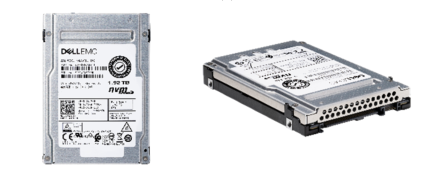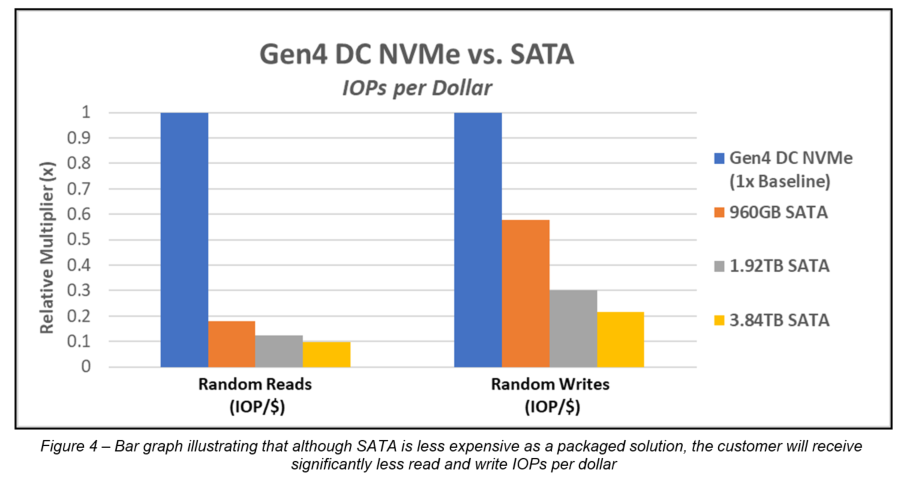

U.2 – Still the Industry Standard in 2.5” NVMe SSDs
Download PDFMon, 16 Jan 2023 13:44:22 -0000
|Read Time: 0 minutes
Summary
This DfD is an informative technical paper meant to educate readers about the initial intentions around the U.3 interface standard, how it proceeded to fall short upon development, and why server users may want to continue using U.2 SSDs for their server storage needs.
Introduction
In our world of technology, we expect to see multiple generations of devices and standards, with each successive generation being faster and more feature-rich than the previous. We have seen this pattern so often that we expect version N+1 of anything to be better than version N in nearly all respects.
So, what about the new U.3 interface standard compared to U.2? Surprisingly, U.3 is not the next generation since it was not intended to replace U.2. It was originally conceived as a low-cost NVMe replacement for the SATA SSD. A lot has changed since the inception of U.3 and eventually the standard required U.3 SSDs to be backwards compatible to existing x4 U.2 SSDs. This requirement forced SSD vendors to either develop flash controller silicon with 6 PCIe lanes or to add mux chips to steer the existing PCIe lanes on the SSD. By doing so, U.3 SSDs have the following disadvantages:
- U.3 SSDs do not hit the same cost points as SATA SSDs
- U.3 SSDs do not have any cost advantage over U.2 SSDs (and may end up being more expensive)
- U.3 SSDs lost their ability to differentiate themselves from U.2 SSDs
U.3 has been touted as a way to enable a tri-mode backplane that will support SAS, SATA and NVMe drives to work across multiple use-cases. The tri-mode backplane claim was to reduce system costs, while providing an upgrade path so that users can later replace their existing SAS and SATA drives with higher performance NVMe SSDs. While a tri-mode backplane can technically support SAS, SATA, and NVMe drives, mixing SAS and SATA virtual disks behind a single controller is rarely done. Adding NVMe to the mix makes even less sense because NVMe SSDs are much higher performing than SAS or SATA drives.
Even an upgrade path from SAS or SATA drives to all NVMe SSDs is severely limited by the tri-mode controller. A high-performance controller has 16 lanes that can support, for example, 16 x1 devices. Replacing 16 x1 SATA SSDs with 16 x1 NVMe SSDs as originally envisioned by U.3 would make sense. However, because U.3 matched U.2 and with support for up to a x4 link, customers will likely not want to give up the higher performance the additional lanes provide. A 16-lane tri-mode controller could support only 4 x4 U.3 SSDs – not very many for such an expensive controller.
A SAS expander would normally be used to increase the number of SAS devices, but it cannot support PCIe as there are no tri-mode expanders. Additionally, a PCIe switch would normally be used to increase the number of NVMe devices, but it cannot support SAS or SATA devices. The result is that the system either suffers poor
U.3 performance or must incur the cost of additional tri-mode controllers. Thus, because U.3 combines the SAS and SATA lanes with the NVMe lanes, it is much more difficult and expensive to scale out the tri-mode solution to achieve high performance. The argument that U.3 allows system designers to develop a common set of backplanes that work across multiple use cases does not hold, as the difference in link widths and the inability to scale will push users to continue adopting solutions tailored to their specific needs.
U.2 keeps the SAS and SATA lanes separate from the NVME lanes, allowing system designers to scale solutions independently with readily available SAS expanders and PCIe switches. Dell Technologies recognizes a wide range of customer requirements and provides solutions that are tailored to each market as opposed to a one-size-fits-all solution. To that end, Dell Technologies has developed high-performance, universal x4 drive bays that have been shipping on Dell PowerEdge servers for the last two generations. Dell Technologies also provides SAS and SATA-only solutions to reduce cost in entry-level systems. Next generation backplanes enable NVMe HWRAID which connects up to 8 NVMe SSDs at PCIe Gen4 x2. Direct connect solutions remain at PCIe Gen4 x4.
Conclusion
U.3 enables a tri-mode backplane which allows simple upgrades from SAS or SATA to NVMe, yet increases the base cost of a SAS or SATA solution. Moreover, unless the system is designed with sufficient lanes for the NVMe SSDs, the performance will be poor. The additional hardware required to obtain full NVMe performance negates any system cost benefits of the U.3 architecture.
Dell Technologies has demonstrated that the wide range of customer requirements can be met with SAS, SATA and U.2 drives, using designs targeted individually for performance or cost. Dell’s universal U.2 backplane takes advantage of the separation of SAS and SATA lanes from NVMe lanes to maximize NVMe performance, while maintaining SAS and SATA compatibility in a universal bay. This high-performance, universal U.2 backplane avoids the confusion and complexity brought by U.3. However, it is important to remember that the key is the backplane architecture, not the drive type. Dell’s backplane will work with U.3 SSDs, as well as U.2 SSDs, since U.3 SSDs are required to be compatible. Dell has also designed next generation backplanes to enable NVMe HWRAID which connects up to 8 NVMe SSDs at PCIe Gen4 x2. All of Dell’s direct-connect solutions remain at PCIe Gen4 x4.
Related Documents

Choosing the Most Appropriate Server SDD Interfaces: E3.S, NVMe, SAS, or SATA
Sun, 10 Sep 2023 15:32:11 -0000
|Read Time: 0 minutes
Summary
This document is a straightforward guide to help PowerEdge customers choose the most appropriate SSD type, based on their business needs and goals.
As new generations of CPUs and servers are released, they frequently bring new technologies such as increased PCIe bus speeds and new storage formats, such as the EDSFF E3.S form factor for NVMe PCIe 5 Solid State Drives (SSDs), as released in early 2023. PowerEdge customers can optimize their local storage configurations based on their applications and business needs. Multiple factors must be taken into consideration to make an informed decision, such as workload demands, budget, scale, and even roadmap. Still, when all of these factors are understood, it can be difficult to determine the best choice of SSD interface among NVMe, SAS, Value SAS, and SATA.
This DfD (Direct from Development) tech note is provided to simplify and guide customers in their choice of SSD. We hope customers will find it to be a valuable resource when it becomes unclear which storage medium is the optimal choice. First, let’s summarize the history and architecture of the NVMe, SAS, Value SAS, and SATA SSD interfaces:
NVMe (Non-Volatile Memory Express)
Since it came to market in 2011, the NVMe interface remains the class of flash storage with the highest performance. The driving architectural differentiator of NVMe is that it uses the PCIe interface bus to connect directly to the CPU and streamline the data travel path. This design contrasts with SAS and SATA, which require data to first traverse to an HBA disk controller before reaching the CPU. By removing a layer from the stack, the travel path is optimized and produces reduced latency and improved performance. Scalability is also significantly improved, because NVMe drives can go beyond the traditional four lanes by using lanes from the same “pool” of lanes connected to the CPU. EDSFF including EDSFF E3.S are the next generation of NVMe SSDs. These form factors enable higher server storage density. Furthermore, NVMe performance continually improves as each new generation of the PCIe standard becomes available.
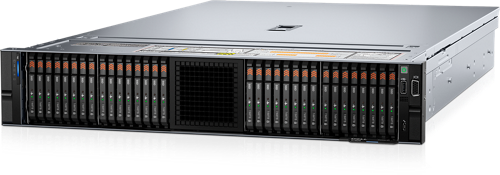
Figure 1. Latest Dell PowerEdge R7625 with 32 x E3.S drives
SAS (Serial Attached SCSI)
The SAS interface was released a few years after SATA and introduced new features that are beneficial for modern workloads. Instead of building upon the ATA (Advanced Technology Attachment) standard used in SATA, SAS serialized the existing parallel SCSI (Small Computer System Interface) standard. SAS cable architecture has four wires within two cables, creating more channels available for moving data and more connectors available for use by other devices. Furthermore, the channels are full duplex, allowing for reads and writes to traverse concurrently. Improved reliability, error reporting, and longer cable lengths were also introduced with SAS. Value SAS is often alongside SAS using the same interface but using lower performance devices, giving customers the technical benefit of SAS at a lower a price point. SAS improvements are made to this day, with SAS4 (24G) now available in certain supported PERC 12 (PowerEdge Raid Controller) configurations. For this reason, SAS still remains valuable and relevant within the market.
SATA (Serial Advanced Technology Attachment)
The SATA interface was released in 2000 and is still commonly adopted within modern servers because it is the most affordable of the SSD interface options. It replaced parallel ATA with serial ATA, which resolved various performance and physical limitations at that time. The SATA cable architecture has four wires within one cable—two for sending data and two for receiving data. These four channels are half-duplex, so data can only move in one direction at a time. At 6Gb/s, SATA write speeds are sufficient for storing information, but its read speeds are slow compared to more modern interfaces, which limits its application use for modern workloads. The last major SATA revision was in 2008, and SATA will not see further advancement in the future.
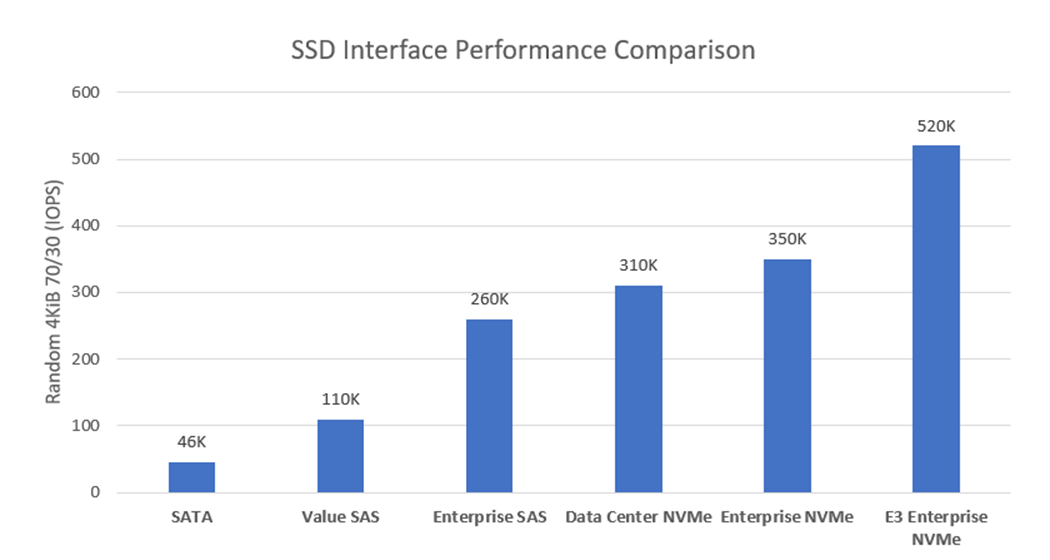
Figure 2. Random 4KiB 70% read / 30% write IOPS variances for each storage interface
Table 1 lists key metrics for five storage-drive types most commonly attached to PowerEdge servers: Enterprise NVMe, Data Center (DC) NVMe, Enterprise SAS, Value SAS, and SATA. This comparison helps clarify which storage interface type is most applicable to specific business needs and goals.
Table 1. Ranking performance metrics of Enterprise NVMe, DC NVMe, Enterprise SAS, Value SAS, and SATA drives
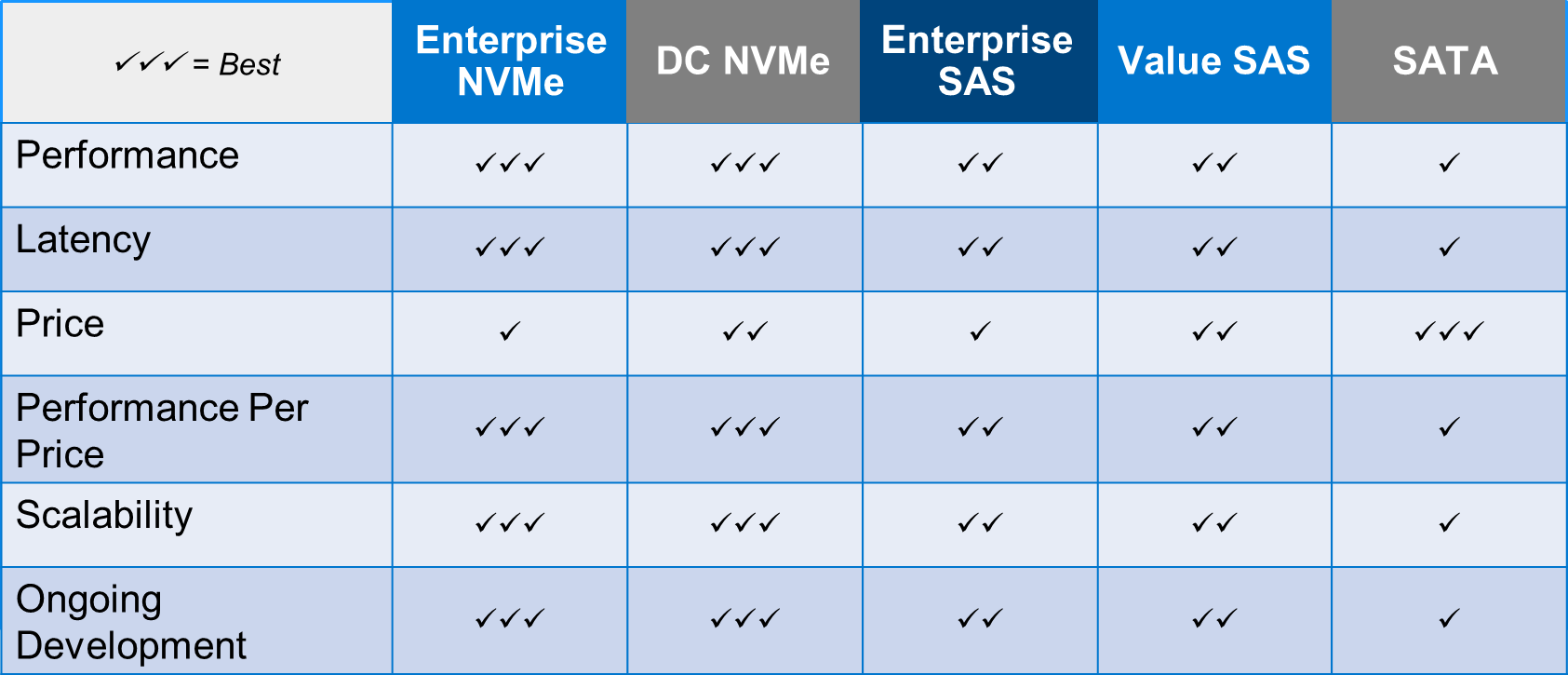
Performance: Performance can be measured in various ways. For this example, Random 4 KiB 70/30 (70% reads, 30% writes) data was compared and published here by Dell, with higher IOPS being better. Figure 2 illustrates the following IOPS performance variances:
- E3.s NVMe Enterprise class drives produce 1.48x more IOPS than Enterprise NVMe SSDs.
- Enterprise NVMe SSDs produce 1.13x more IOPS than DC NVMe SSDs.
- DC NVMe SSDs produce 1.99x more IOPS than Enterprise SAS SSDs.
- Enterprise SAS SSDs produce 1.42x more IOPS than Value SAS SSDs.
Lastly, Value SAS SSDs produce 2.39x more IOPS than SATA. Random 4KiB 70% read / 30% write IOPS variances for each storage interface
Latency: The NVMe protocol reduces the number of touchpoints that data must travel (bypassing the HBA) to reach the CPU. It also has less overhead, giving it significantly lower latency than SAS and SATA. The SAS protocol is full-duplex (as opposed to half-duplex) and offers two channels (as opposed to one) for data to use, giving it over 50% lower latency than SATA.
Price: According to Dell pricing in Q1 2022, SATA SSDs are the least expensive storage interface, at ~0.9x the price of Value SAS SSDs. Value SAS SSDs are ~0.85x the price of DC NVMe SSDs. DC NVMe SSDs are ~0.85x the price of Enterprise SAS SSDs. Enterprise SAS SSDs are ~0.97x the price of Enterprise NVMe SSDs. Pricing is volatile and these number variances are subject to change at any time.
Performance per price: PowerEdge customers who have not identified which metric is most important for their business goals should strongly consider performance (IOPS) per price (dollar) to be at the top of the list. Because NVMe has such a significant performance lead over SAS and SATA, it is easily the golden standard for performance per price. DC NVMe SSDs have the best performance per price, followed closely by Enterprise DC NVMe SSDs, followed by Value SAS SSDs, followed closely by SAS SSDs, followed by SATA SSDs. This tech note gives more performance/price detail.
Scalability: Currently, NVMe shows the greatest promise for wider-scale implementation due to the abundance of lanes that can be available with low overhead. However, it can be a costly investment if existing data center infrastructures must be upgraded to support the NVMe I/O protocol. SAS is more flexible, because SAS expanders are cost-effective, and most data center infrastructures already have the required hardware to support it. However, SAS does not have the potential to scale out as aggressively as NVMe. SATA does not scale well with SSDs.
Ongoing development: The NVMe interface has consistent and substantial advancements year-over-year, including updates such as NVMe 2.0b (released in Oct. 2022) and PCIe 5.0 (released on Intel CPUs in Jan. 2023). The SAS interface also has regularly cadenced updates, but the impact is mostly marginal, except for the recent SAS4 (24G) update. There are no plans to extend the capabilities of the SATA interface beyond the current limitations.
Assigning these ranks for each storage interface and metric, and explaining why the rank was given, will make it easier to understand which drive type will be the most valuable in relation to business needs and goals.
Guidance in accordance with business goals
Each business is unique and will have different requirements for their storage drives. Factors such as intended workload, business size, plan to scale, budget, and so on, should be considered to make a confident investment decision. Although this decision is ultimately up to each business, we provide the following guidelines to help businesses that are still undecided to make an educated choice:

Enterprise NVMe SSD: Businesses that desire maximum performance and have a flexible budget should consider purchasing Enterprise NVMe SSDs. Storage I/O heavy workloads such as HPC or AI will immediately benefit from the additional cache gained from the non-volatile nature of this storage interface. The fast-paced performance growth seen in Enterprise NVMe SSDs will also allow smaller workloads like databases or collaboration to easily keep up with the ever-increasing size of data. Ultimately, because Enterprise NVMe undergoes consistent valuable changes every year, such as performance increases and cost reduction/optimization, we recommend futureproofing your data center with it.
DC NVMe SSD: Businesses that desire a budget conscious NVMe solution, in addition to the greatest value, should consider purchasing DC NVMe SSDs. These drives have the same value proposition as for Enterprise NVMe SSDs, but with a sizeable price reduction (0.83x) and performance hit (0.86x). Businesses that want to get the best value will be pleased to know that DC NVMe drives have the best performance-per-price.
Enterprise SAS: Businesses that desire to continue using their existing SCSI-based data center environment and have maximum SAS performance should consider purchasing Enterprise SAS SSDs. Although the Enterprise SAS interface does not currently have any ranking leadership for performance or pricing, it is established in the industry as highly reliable, cost-effective to scale, and shows promise for the future, with 24G available. Enterprise SAS SSDs will adequately handle medium-duty workloads, such as databases or virtualization, but will operate best when mixed with NVMe SSDs if any heavy-duty workloads are included.
Value SAS: Businesses that desire a budget-conscious SAS solution should consider purchasing Value SAS SSDs. These drives have the same value proposition as for Enterprise SAS SSDs, but with both a sizeable price reduction (0.73x) and performance hit (0.71x). For this reason, it has a slightly lower performance-per-price than Enterprise SAS, and is therefore more of a “value” play when compared to SATA. This storage interface has a purpose for existing though, because small-to-medium businesses with a smaller budget can leverage this lower-cost solution while still receiving the many benefits of the SAS interface.
SATA: Businesses that desire the lowest price storage interface should consider purchasing SATA SSDs. However, caution should be applied with this statement, because there is currently no other value proposition for SATA SSDs, and the price gap for these flash storage interfaces has been shrinking over time, which may eventually remove any valid reason for the existence of SATA. With that said, SATA is currently still a solid choice for light workloads that are not read-heavy.
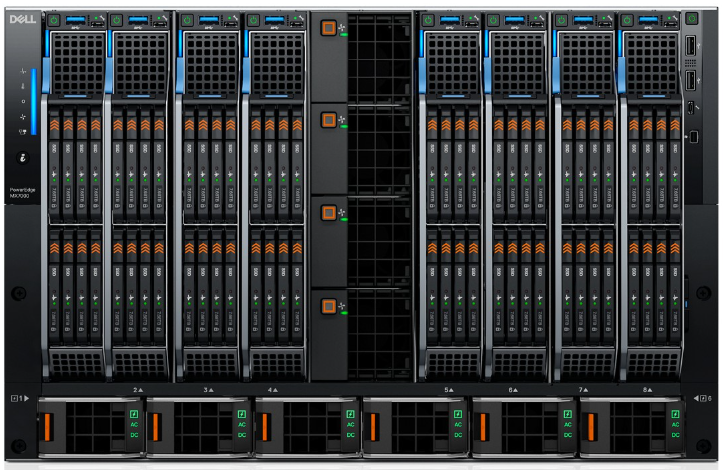
Figure 3. Latest Dell PowerEdge MX760c with 8 x E3.S drives per sedge
Conclusion
The story of competing NVMe, SAS, and SATA storage interfaces is still being written. Five or more years ago, analysts made the argument that although NVMe has superior performance, its high cost warranted SAS the title of ‘best value for years to come’. What we see today is a rapidly shrinking price gap for all of these interfaces. We observe that SATA performance has fallen far behind SAS, and very far behind NVMe, with no plan to improve its current state. We also see NVMe optimizing its performance and price-point to yield more market share every year. Most importantly, we expect rapid growth in the industry adoption of heavier workloads and ever-increasing data requirements. Both storage drive and industry trends lead us to believe that the best option for any business desiring to build a future-proofed data center would be to begin making the investment in NVMe storage. However, the remaining types of storage still hold value for varying use cases. It is the customer’s choice about which storage type is best for their business goals. We hope this guide has helped to clarify the available options.

New PCIe Gen4 Data Center NVMe Drives Offer Unmatched Value for PowerEdge Servers
Mon, 16 Jan 2023 13:44:29 -0000
|Read Time: 0 minutes
Summary
PCIe Gen4 Data Center NVMe drives challenge the existence of traditional SAS and SATA drives. This entry-level NVMe offering outperforms both SAS and SATA while retaining an affordable price that directly competes with SATA.
The purpose of this DfD is to educate readers on our new Gen4 Data Center NVMe offerings, including a brief history on the technology, a performance data comparison to SAS and SATA, and their value proposition in the market today. With this knowledge we hope our customers can make the best storage investment decision to optimize their PowerEdge servers.
NVMe Market Positioning
The NVMe host controller interface has been rapidly evolving since its inception less than a decade ago. By including high-performance, scalable technologies absent from both SAS and SATA interfaces, such as non-volatile (persistent) memory and the high-speed PCIe bus, NVMe was originally designed only as a premium storage offering and was priced to reflect that for several years. However, this novelty technology has become conventional. The shift inclined suppliers to optimize their processes to create more competitive price points. Now that the Gen4 Data Center NVMe drive has been introduced with both the high-performance and a more affordable price – is it time to start transitioning completely to NVMe?
Figure 1 – Dell U.2 PCIe Gen4 NVMe SSD
Enterprise vs. Data Center NVMe
There are two classes of NVMe drives used in servers – Enterprise NVMe and Data Center NVMe SSD. Enterprise NVMe is the premium drive made for enterprise environments that run 24/7. This won’t be discussed, as its performance edge and enterprise features drive the price too high to compete with SAS and SATA at this time.
Instead, we will be focusing on the Data Center NVMe SSD. This vSAN-certified NVMe drive is tailored for scale-out/hyperscale environments where enterprise features, such as dual port and FIPS support, are not needed for the Data Center customer. This more targeted feature set, coupled with a lower-cost eight-channel controller, enables a more attractive price comparable to SATA. This high performance (see Figure 2) and lower price-point creates a clear and distinctive value proposition for this class of NVMe drive.
Interface | Capacity | Class | Seq. Read GB/s | Seq. Write GB/s | Random Reads - (4K) IOPs | Random Writes (4K)- IOPs |
RI NVMe | 1.92TB | Enterprise | 6.2 | 2.3 | 920 | 110 |
RI NVMe | 1.92TB | Data Center | 5.9 | 2.5 | 870 | 120 |
RI NVMe | 3.84TB | Enterprise | 6.2 | 3.45 | 1360 | 130 |
RI NVMe | 3.84TB | Data Center | 5.9 | 3 | 1050 | 150 |
RI NVMe | 7.68TB | Enterprise | 6.2 | 3.45 | 1360 | 130 |
RI NVMe | 7.68TB | Data Center | 5.9 | 3.5 | 1050 | 140 |
Figure 2 – Performance comparison of PCIe Gen4 Enterprise and Data Center NVMe SSDs
When comparing identical capacities of enterprise and data center NVMe drives, we can see that most performance readouts are very similar to one another, at around ±10%. Outliers do seem to exist, but they favor both sides. This indicates that the DC NVMe SSD does not sacrifice any significant amount of performance for its ‘entry-level’ price tag, but primarily its enterprise features. Thus, Gen4 DC NVMe is an excellent NVMe option for users who do not require the enterprise features.
Comparing Performance and Pricing
Here is where it gets really interesting. Pricing for identical NVMe drives remain relatively constant with each new generation. In this case, both PCIe Gen3 and PCIe Gen4 DC NVMe are priced nearly one-to- one, despite seeing significant performance gains with support for PCIe Gen4. This begs for some due diligence – with higher performance at cost parity, will Gen4 DC NVMe now expunge any remaining value proposition that may justify still using SAS or SATA in your PowerEdge servers?
To answer this question, we must first scrutinize the performance data. Figure 3 below shows how the performance readouts stack up and helps us understand the variances (highlighted in orange).
Swimlane |
Interface |
Capacity |
PCIe |
Model | Endurance (DWPD) | Seq. Reads (GB/s) |
| Seq. Writes (GB/s) |
| Random Reads - 4K (IOPs) |
| Random Writes - 4K (IOPs) |
|
Read Intensive | NVMe | 960GB | Gen4 x4 | Data Center Agnostic | 1 | 5.90GB/s |
| 1.40GB/s |
| 550K |
| 50K |
|
Read Intensive | SAS | 960GB | N/A | Dell Brand Agnostic | 1 | 1.02GB/s | 5.8x | 0.84GB/s | 1.7x | 184K | 3.0x | 34K | 1.5x |
Read Intensive | SATA | 960GB | N/A | Dell Brand Agnostic | 1 | 0.48GB/s | 12.3x | 0.44GB/s | 3.2x | 79K | 7.0x | 23K | 2.2x |
Read Intensive | NVMe | 1920GB | Gen4 x4 | Data Center Agnostic | 1 | 5.90GB/s |
| 2.50GB/s |
| 870K |
| 120K |
|
Read Intensive | SAS | 1920GB | N/A | Dell Brand Agnostic | 1 | 1.02GB/s | 5.8x | 0.95GB/s | 2.6x | 186K | 4.7x | 56K | 2.1x |
Read Intensive | SATA | 1920GB | N/A | Dell Brand Agnostic | 1 | 0.47GB/s | 12.6x | 0.44GB/s | 5.7x | 78K | 11.2x | 26K | 4.6x |
Read Intensive | NVMe | 3840GB | Gen4 x4 | Data Center Agnostic | 1 | 5.90GB/s |
| 3.00GB/s |
| 1050K |
| 150K |
|
Read Intensive | SAS | 3840GB | N/A | Dell Brand Agnostic | 1 | 1.02GB/s | 5.8x | 0.96GB/s | 3.1x | 189K | 5.6x | 57K | 2.6x |
Read Intensive | SATA | 3840GB | N/A | Dell Brand Agnostic | 1 | 0.48GB/s | 12.3x | 0.44GB/s | 6.8x | 79K | 13.3x | 25K | 6.0x |
Read Intensive | NVMe | 7680GB | Gen4 x4 | Data Center Agnostic | 1 | 5.90GB/s |
| 3.50GB/s |
| 1050K |
| 140K |
|
Read Intensive | SAS | 7680GB | N/A | Dell Brand Agnostic | 1 | 1.01GB/s | 5.8x | 0.96GB/s | 3.6x | 188K | 5.6x | 47K | 3.0x |
Figure 3 – Table comparing read and write performance for three storage mediums (Gen4 DC NVMe, SAS, and SATA)
Gen4 DC NVMe outperforms its competitors by a longshot for every metric, with a performance increase multiplier ranging from:
- 1.7x - 5.8x when compared to SAS
- 2.2x - 13.3x when compared to SATA
The sequential and random read numbers for Gen4 DC NVMe are excellent as expected, and the write IOPs have significantly improved and are even approaching Enterprise Mixed Use (MU) NVMe IOPs. Additionally, the endurance has also doubled from 0.5 to 1 DWPD (Drive Writes Per Day).
Pricing comparisons are a bit more complex to discuss accurately because they are always shifting and very sensitive. So, for this exercise, we will determine relative pricing percentages for vendor-agnostic models from our Q4 2021 price list. If Gen4 DC NVMe drives are the baseline (1.0x), then for the same capacity you will see an average price multiplier of:
- 1.43x for SAS
- 0.77x for SATA
Based on this performance and pricing we can conclude that there is no benefit in choosing SAS over Gen4 DC NVMe, because it is both more expensive and has much lower performance.
All that is left to determine is the value proposition of SATA. As mentioned earlier, SATA drives are still the most affordable form of storage medium on the market, at around 0.77x the price of Gen4 DC NVMe. However, there is still a bigger picture to craft when the data is analyzed at a deeper level. By calculating the performance-per-dollar (IOPs/$) for each capacity of Gen4 DC NVMe and SATA, we can get a better grasp on how effective each dollar spent really is. See Figure 4 below:
When the data is analyzed at this level, it becomes very apparent that each dollar spent on Gen4 DC NVMe goes way farther than it does with SATA. In the case of random read performance, each dollar spent on SATA will produce 0.1x - 0.2x as many IOPs as Gen4 DC NVMe would. In layman’s terms, this means that every dollar spent on SATA is nearly an order of magnitude less effective than Gen4 DC NVMe!
Final Thoughts
Now that the data has been presented and analyzed we can circle back to the original question - is it time to start transitioning completely to NVMe? Based on the high performance and very attractive price point, we believe that the Data Center NVMe drive has a clear and compelling value proposition for PowerEdge customers looking to invest in a scalable, forward-looking storage medium. However, customers that prioritize the lowest price possible will also find SATA to be a valuable solution.
- PCIe Gen4 Data Center NVMe is strongly recommended for most customer user cases. Budget-conscious customers should also consider that greater performance can be achieved at a lower price than SATA simply by scaling down the total number of Gen4 DC NVMe drives. With a performance output of up to 13.3x more than SATA while only being around 1.3x more expensive, customers can scale down the quantity of NVMe drives for the most cost-effective solution.
- SATA is recommended to customers where the lowest price is most important. As long as SATA holds its extremely low price, there will always be a target audience for this storage type. Customers that neither intend to scale, nor require high-performance, may certainly find this to be the best solution for their needs.
In conclusion, while SATA technology still brings value to the market through its extremely low price point, PCIe Gen4 Data Center NVMe technology has demonstrated that it is certainly the most cost-effective storage solution from a price-per-performance metric. Customers also have more flexibility with the option to increase performance and lower price by scaling down the total number of NVMe drives! Regardless, PCIe Gen4 Data Center NVMe technology has proven that for the time being it offers unmatched value to PowerEdge servers.





